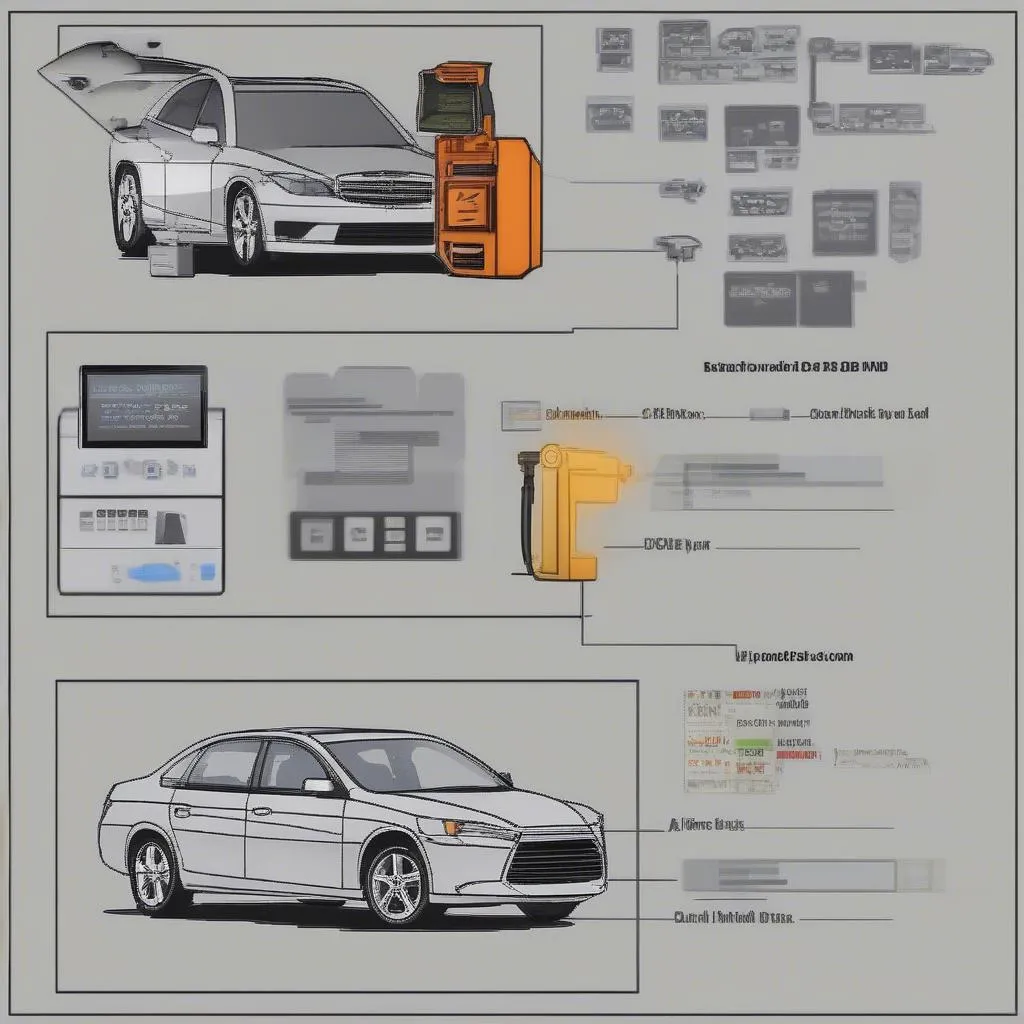Let’s face it, when your car starts acting up, the last thing you want to hear is, “It needs a scan tool.” You probably picture some complicated, expensive gadget only mechanics understand. But what if I told you analyzing your engine with a scan tool is simpler than you think and can potentially save you money and stress?
Understanding the Importance of a Scan Tool for Engine Analysis
Think of your car’s engine as a complex communication network. Every time your car acts up, it’s sending signals – they’re just hidden in a language you can’t understand. A scan tool is like a translator, allowing you to decipher these signals, pinpoint the problem, and understand what needs attention.
What exactly does a scan tool do?
It allows you to read your car’s OBD2 system (On-Board Diagnostics 2), which is a standardized system found in most cars manufactured after 1996. The OBD2 system constantly monitors your engine’s performance, collecting data like:
- Engine speed (RPM): This tells you how fast the engine is turning.
- Fuel trim: This reveals how much fuel your engine needs and whether there’s a problem with the fuel delivery system.
- Ignition timing: This indicates whether the spark is occurring at the right time for optimal combustion.
- Oxygen sensor readings: These monitor how efficiently the engine is burning fuel and help ensure the engine is running cleanly.
Why Should You Analyze Your Engine with a Scan Tool?
Analyzing your engine with a scan tool can help you in a variety of ways:
- Identify potential problems early: You can catch minor issues before they become major headaches.
- Save money: You might be able to fix problems yourself or get a more accurate diagnosis from a mechanic, potentially preventing unnecessary repairs.
- Gain a deeper understanding of your car’s health: You’ll know exactly what’s going on under the hood and can take proactive measures to keep your car running smoothly.
How to Analyze Your Engine with a Scan Tool: A Step-by-Step Guide
Now, let’s get practical. Here’s a step-by-step guide on how to analyze your engine with a scan tool:
- Choose the right scan tool: You have various options, from basic OBD2 scanners to more advanced tools specific to certain car models. For most everyday needs, a basic OBD2 scanner is enough.
 OBD2 Scanner
OBD2 Scanner
- Connect the scan tool: Locate your car’s OBD2 port, usually under the dashboard or near the driver’s side steering wheel. Plug in the scan tool.
- Turn on your car: Make sure the ignition is on but the engine isn’t running. This allows the scan tool to communicate with your car’s system.
- Read the trouble codes: Many scan tools will automatically display any active trouble codes. These codes are like messages from your car’s computer, describing potential issues.
- Interpret the trouble codes: There are online resources and even apps that can translate these codes into understandable language. For example, a code “P0171” might translate to “System Too Lean (Bank 1)”.
- Investigate further: Based on the trouble codes, you can research specific parts, potential causes, and repair options.
Unlocking the Power of Live Data: Going Beyond Trouble Codes
Reading trouble codes is just the beginning. Advanced scan tools allow you to access live data, which can provide a more comprehensive picture of your engine’s performance.
How to Analyze Live Data:
- Understanding data parameters: Familiarize yourself with the different parameters displayed by your scan tool (like those mentioned earlier).
- Look for discrepancies: Compare live data readings to the manufacturer’s specifications or known values. For example, if your engine speed is consistently fluctuating, it might indicate a problem with your idle air control valve.
- Track data over time: Monitor readings over a longer period to identify any trends or patterns. This can help you determine if a problem is intermittent or recurring.
Common Questions:
- Where can I find a good scan tool? There are many online retailers and automotive stores selling scan tools. Be sure to choose a tool compatible with your car’s model and OBD2 protocol.
- What are the most common trouble codes I might encounter? Some common codes include “P0171” (System Too Lean), “P0174” (System Too Rich), “P0300” (Multiple Cylinder Misfire), and “P0420” (Catalyst System Efficiency Below Threshold).
- Can I diagnose and fix problems myself with a scan tool? While a scan tool can be a powerful tool for diagnosis, it’s important to remember that repairing certain engine issues may require the expertise of a qualified mechanic.
Expert Insights:
“A scan tool is an essential tool for any mechanic, but even novice car owners can benefit from understanding its basics.” – Dr. Sarah Johnson, Automotive Engineer
“By using a scan tool, you can often identify the root cause of a problem before spending unnecessary money on parts.” – Mr. Michael Davis, Automotive Technician
Resources:
- https://diagxcar.com/bluetooth-obd2-scanner/
- https://diagxcar.com/how-to-read-fuel-mixture-on-a-scan-tool/
Get Professional Help:
If you’re struggling to understand your scan tool readings or need help troubleshooting a specific engine problem, don’t hesitate to reach out! We have a team of experienced automotive experts available 24/7 to answer your questions and offer personalized guidance. Just contact us via WhatsApp at +84767531508.
Conclusion:
Analyzing your engine with a scan tool can be a valuable investment in your car’s health and your wallet. While it’s not a replacement for professional diagnosis, it empowers you with knowledge and control over your vehicle’s performance. Use this guide as a starting point to learn more about your car and keep it running smoothly.


